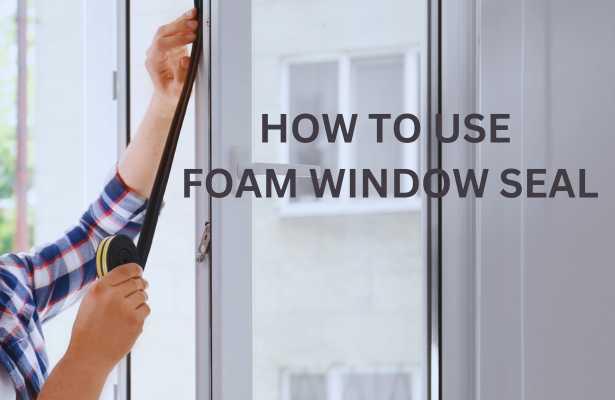Window Foam Seal: The Silent Dynamo Home Energy Efficiency
Window foam seal, often referred to as weatherstripping or draft seal, plays a crucial role in enhancing home energy efficiency. It serves as a barrier to prevent air leaks around windows and doors, helping to maintain a comfortable indoor temperature and reduce energy costs. However, one often overlooked yet crucial factor in achieving energy savings is the humble window seal foam.
What is Window Foam Seal?
Window foam seal, also known as weatherstripping, is a flexible foam strip that is installed around the edges of windows and doors to seal gaps and prevent air leaks. These leaks can account for a significant amount of heat loss in winter and heat gain in summer, leading to higher energy bills.
Benefits of sealing windows with foam
The benefits of installing sealing windows with foam are numerous:
- Improved energy efficiency: By sealing air leaks, foam window seal can help reduce heat loss in winter and heat gain in summer, leading to lower energy bills.
- Reduced noise pollution: window seal foam can help block out external noise, creating a more peaceful and relaxing indoor environment.
- Enhanced dust and pest control: window seal foaml can help prevent dust and pests from entering your home.
- Extended window lifespan: By preventing moisture from entering the window frame,foam window seal can help protect the window from damage and extend its lifespan.
How to use foam window seal
Seal Out the Draft and Save on Your Heating Bill with Foam Window Seals

Tired of drafts whistling through your windows and making your heating bill skyrocket? Foam window seals are a quick and easy solution to seal up those gaps and keep your home warm and cozy.
- For extra sealing power, apply a caulk along the inside edge of the seal.
- If you have any gaps that are too large for foam seals, you can use weatherstripping instead.
- Be sure to re-seal your windows every few years to maintain their effectiveness.
That's it! You've now successfully installed a foam window seal.
Types of window seal foam
There are several different types of window foam seal available, each with its own unique properties:
- EPDM foam seal: EPDM foam seal is a durable and versatile option that is resistant to UV rays and ozone. It is also a good choice for areas with high humidity.
- Neoprene foam seal: Neoprene foam seal is a soft and flexible option that is well-suited for sealing small gaps. It is also resistant to oil and chemicals.
- Silicone foam seal: Silicone foam seal is a high-performance option that is resistant to extreme temperatures and weather conditions. It is also a good choice for sealing irregular gaps.
How to install foam window seal
Installing window foam seal is a relatively easy and inexpensive DIY project. However, it is important to choose the right type of foam seal for your needs and to follow the installation instructions carefully.
Here are the general steps for installing window seal foam:
- Clean the surface: Clean the area where the foam seal will be installed to remove any dirt, dust, or grease.
- Measure the gap: Measure the gap between the window frame and the sash to determine the correct size of foam seal.
- Cut the foam seal: Cut the foam seal to the desired length.
- Apply the adhesive: Peel off the backing from the adhesive strip on the foam seal.
- Install the foam seal: Press the foam seal firmly into the gap, making sure that it is making contact with both the window frame and the sash.
- Trim the excess foam: Trim off any excess foam seal with a sharp knife.
Tips for sealing windows with foam Maintenance
To ensure that your window foam seal continues to perform effectively, it is important to inspect it regularly for any signs of damage or wear. You should also clean the foam seal with a mild soap and water solution to remove any dirt or debris.
By properly installing and maintaining window foam seal, you can significantly improve the energy efficiency, comfort, and noise reduction of your home. This simple and affordable upgrade can make a big difference in your overall homeownership experience.